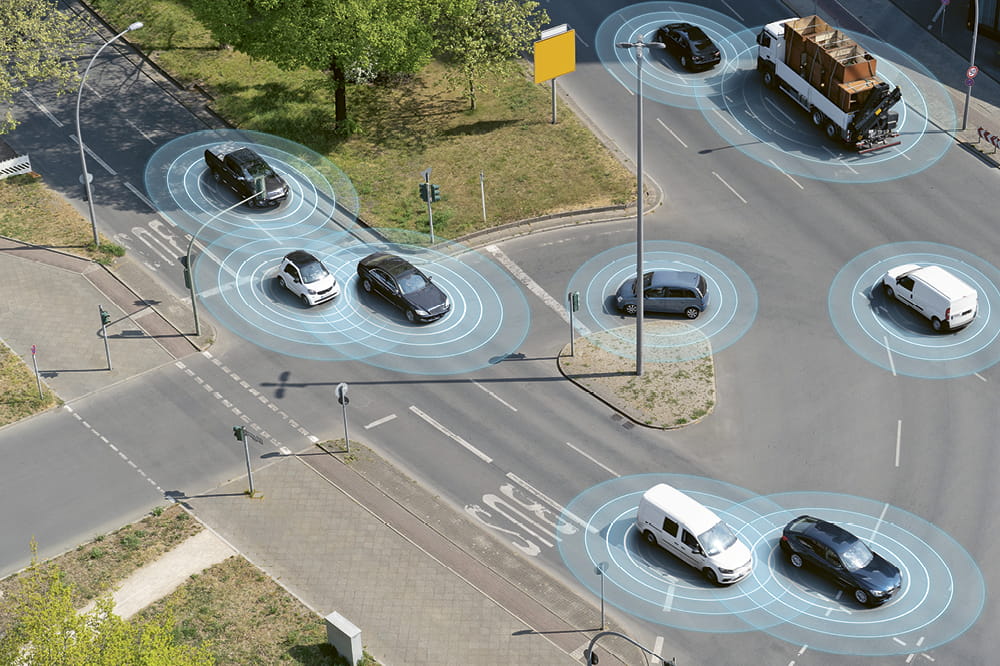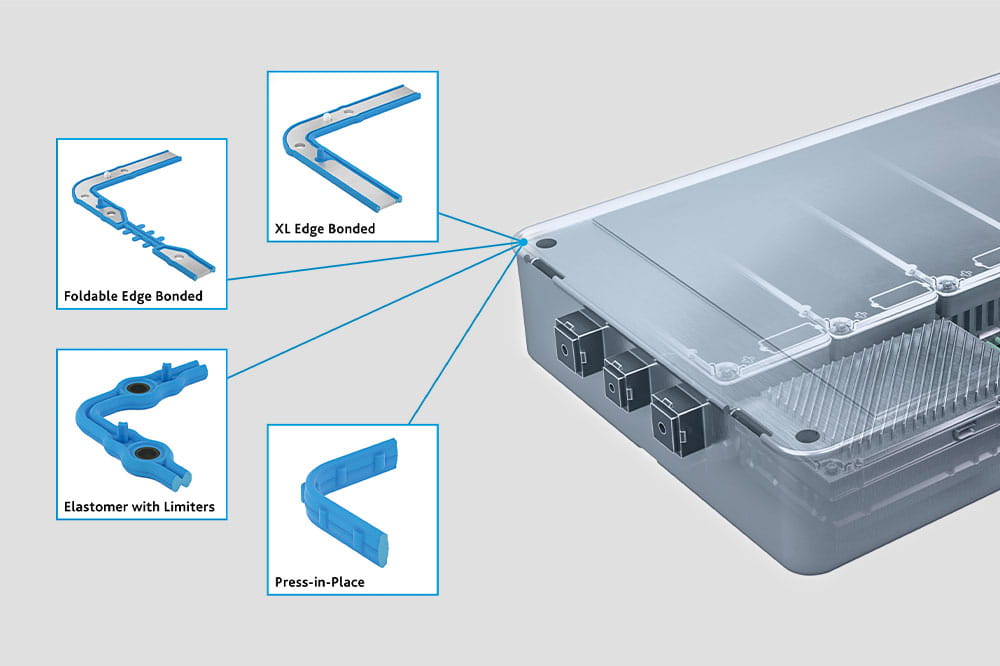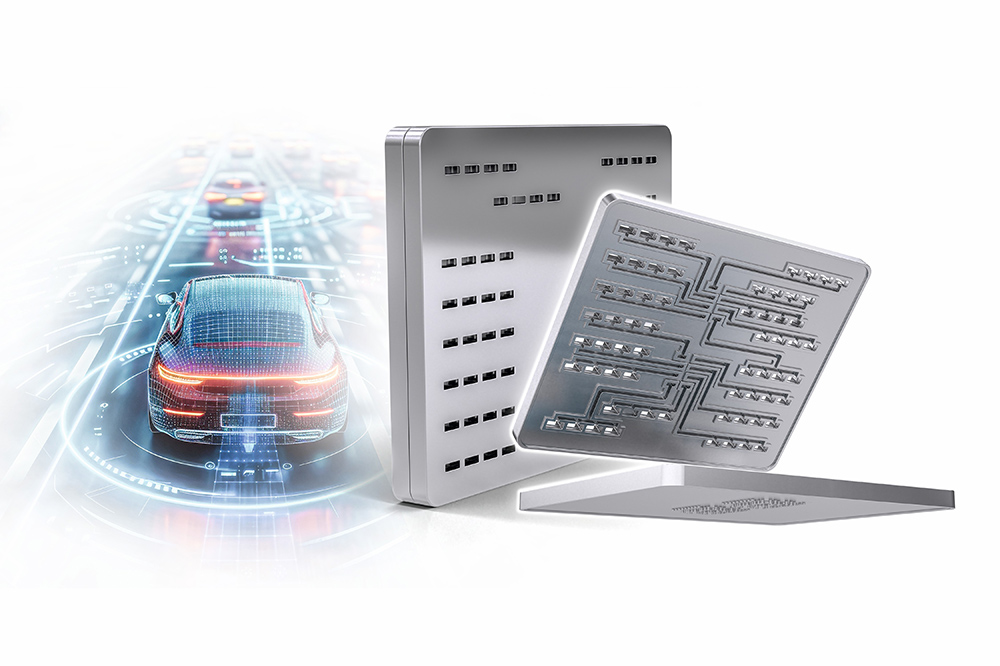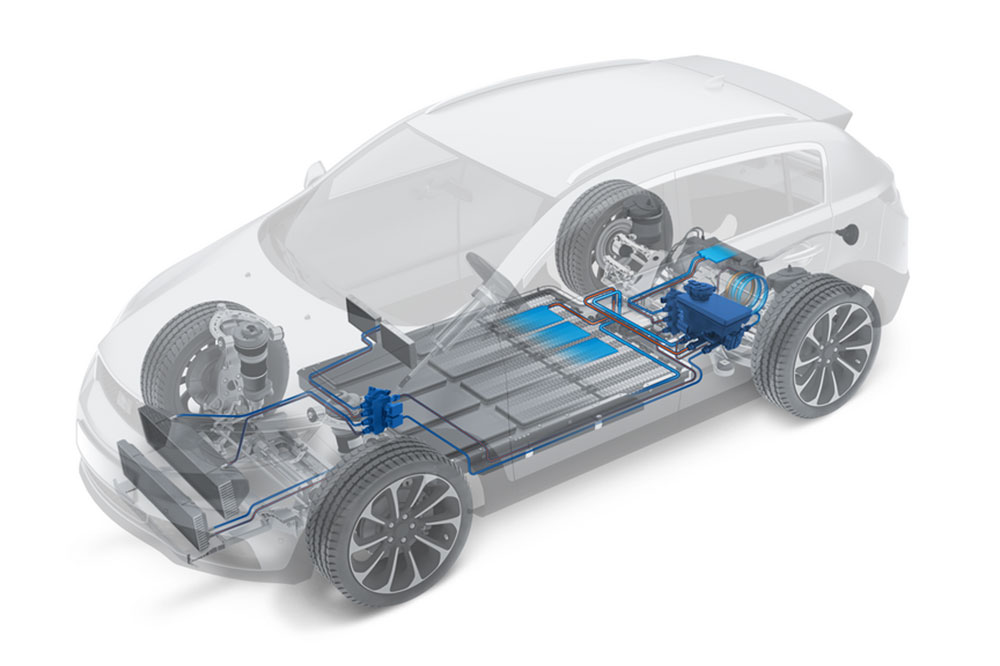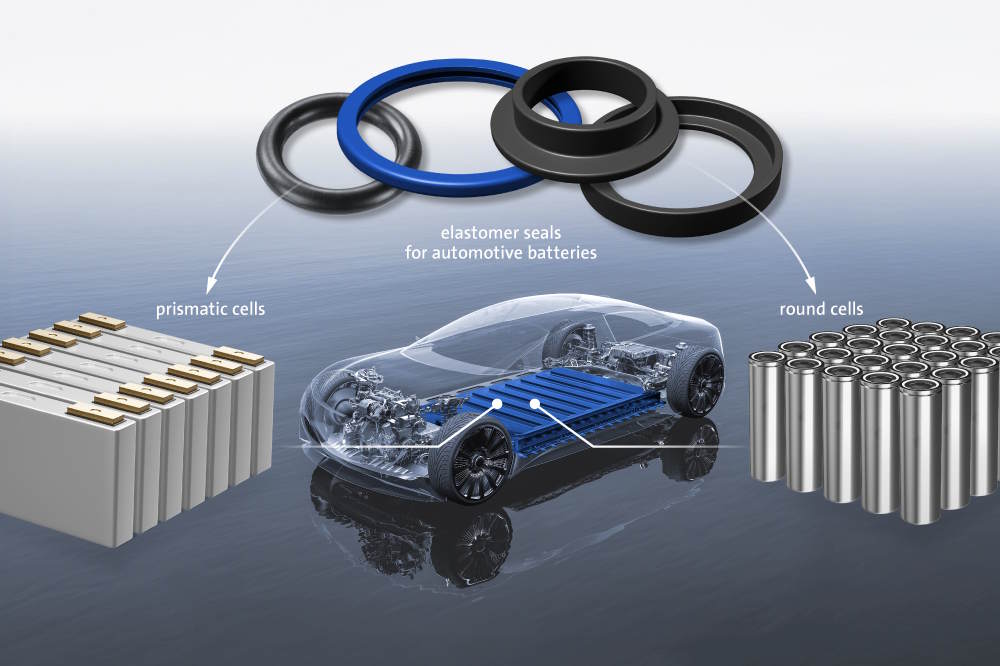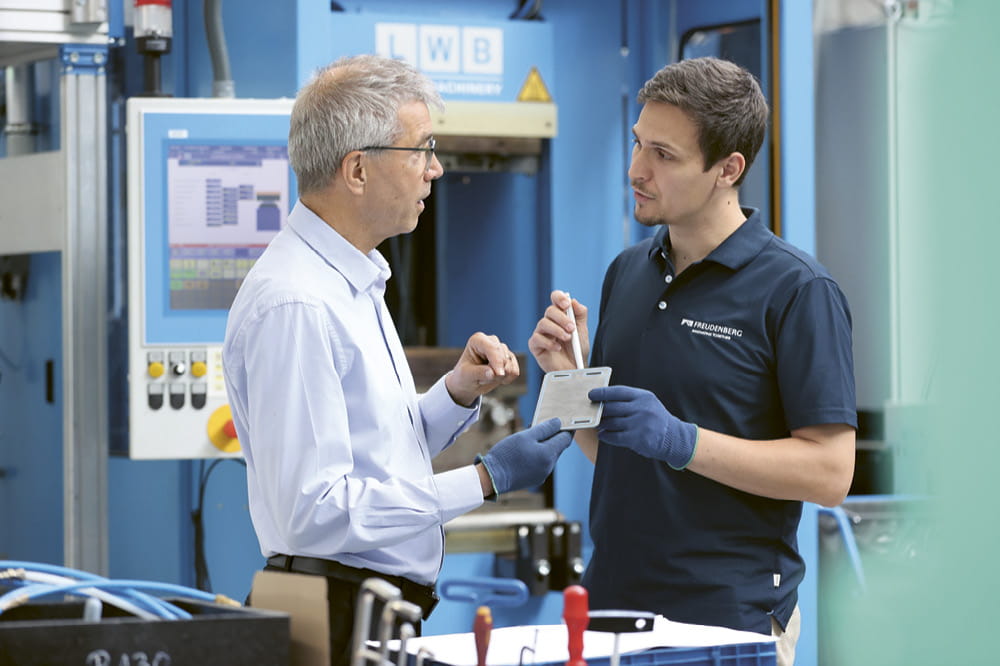Obtain news and background information about sealing technology, get in touch with innovative products – subscribe to the free e-mail newsletter.

06.08.2024 | Story
Artificial Intelligence Makes Autonomous Driving Possible
Autonomous driving represents a huge technical challenge. After all, its model – the human being – is remarkable in many respects. With their eyes and ears, humans have outstanding sensors, they process information on complex traffic situations effortlessly, and they guide the vehicle to its destination. What is the current state of autonomous driving? How important is artificial intelligence to the next steps? An appraisal.
Highly automated driving – that is the formal term for situations where a car travels through traffic independently, leaving the human free to perform other tasks. Technology is progressing in stages towards its most advanced capabilities. The American Society of Automotive Engineers (SAE) has defined five of them. Systems at SAE Levels 1 and 2 are widespread and on the verge of becoming commonplace. They are capable of parking the vehicle or maintaining a safe following distance in congested traffic. They are so smoothly integrated into daily life that they are not perceived as automated driving in many cases. Drivers must constantly monitor these systems and correct malfunctions. If there is an accident, they are held responsible – even if their vehicle fails to report a failure.
Image Processing: Two demanding tasks are environment recognition and object classification. © iStock/Igphotography
The state of the technology has now reached Level 3. At this stage, drivers can turn away from driving and the traffic environment for limited periods and under the right conditions. The first systems, such as the Personal Pilot L3 from BMW and the Drive Pilot from Mercedes-Benz, are on the market. The cars are capable of driving up to 60 km/h (37 mph) independently on appropriate stretches of highway. At this level, the driver can perform secondary activities, such as answering emails. A crucial difference from Level 2: The responsibility falls to the manufacturer.
Artificial Intelligence for Complex Driving Functions
Today, the control software can no longer do without artificial intelligence for complex driving tasks. “Classic programming has reached its limit at this level. On the other hand, a combination of artificial intelligence, machine learning and neuronal networks understands the world more like a human being does and can understand abstractions – for example, the technology can recognize objects that it has never seen before,” says Harald Kröger, Sales Director and President, Automotive, at the American startup SiMa.ai. “This is gradually expanding the capabilities of automated driving and enabling it to function flawlessly under difficult conditions or in unexpected situations.” Kröger is confident that Level 3 systems will be in routine use by the end of the decade, and people will see significant benefits coming from safer roads and reduced driver strain. “In the cars of the past, the human being has been the least reliable link. In contrast, the technology’s response never varies.”
The scenario doesn’t just apply to passenger cars, and higher degrees of automation may even be reached more quickly than many observers expect. Working with its Torc Robotics subsidiary, Daimler Truck wants to offer an autonomous truck at SAE Level 4 in the United States by 2027. It would operate between freight centers (hub to hub). “We are working with our partner, Torc Robotics, to develop autonomous driving for use on U.S. highways. For some time, Torc has been testing autonomous Freightliner Cascadia trucks with our freight customers,” says Joanna Buttler in a Daimler Truck Blog. Buttler is in charge of the company’s Autonomous Technology Group. “I am convinced that autonomous trucks will improve everyday life. Technology is no longer pure fiction or just an idea. It will become a reality this decade. And it has the potential to transform the transportation sector and offer huge opportunities.”
The sensors will go into mass production. The most important development steps have already been completed.
Marc Knapp
Camera, Radar and Lidar
Freudenberg Sealing Technologies has many automotive customers, and Marc Knapp, Director, Division Product Pre-Development, is keeping a close eye on the market. He believes that autonomous driving will become routine. “Three types of sensors in particular are crucial for monitoring the environment and thus, for autonomous driving: cameras, radar and lidar. A lidar system certainly generates very high resolution, making it good at object classification. But it is expensive,” Knapp says. “Radar by now provides enough resolution to identify and classify objects at a much lower cost. In addition, the use of different wavelengths compared to lidar makes it possible to see in fog, rain and snow and detect potential obstacles. Cameras and radar also work together very well. They complement each other in bad weather, and data fusion is very feasible, all at a lower cost than in combination with lidar. The latter is thus reserved for the higher vehicle classes and levels of autonomy.”
There is still room for improvement because of the urgent need for high precision and robustness in some sensor components. Still, Knapp is impressed by the opportunities in the market. “Scaling the production process to very high volumes offers customers real added value, overall,” he says. At present, development advances offering technical and commercial advantages are in the works. They will lead to widespread use of the technology in series production. “The most important development steps have already been taken,” Knapp adds.
Systems Independent of Cloud Data Centers
Data paths, signal processing, and chip performance also have a crucial impact on the quality of the system. “Due to the high security requirements for autonomous driving, it makes sense to have the computing power inside the vehicle and to keep the artificial intelligence independent of cloud-based processing,” Kröger says. “After all, what if the data connection is disrupted in a critical traffic situation and the technology fails? With a delay of just a millisecond, it could be too late to ask the driver to take over.” Advanced chips and AI would create intelligence in the vehicle itself, operating without support from a data center. High-performance processing units for these applications are now reaching the market. “They will revolutionize the use of AI across the board,” Kröger says. The chips also work very energy-efficiently.
After Level 4, the highest stage of development, Level 5, will follow. What will it look like? There will be no driver, and the technology will handle every traffic situation by itself. This scenario may still be off in the future, but it is coming – with the help of artificial intelligence.
More news on the subject Automotive & Transportation

Join Us!
Experience Freudenberg Sealing Technologies, its products and service offerings in text and videos, network with colleagues and stakeholders, and make valuable business contacts.
Connect on LinkedIn! open_in_new